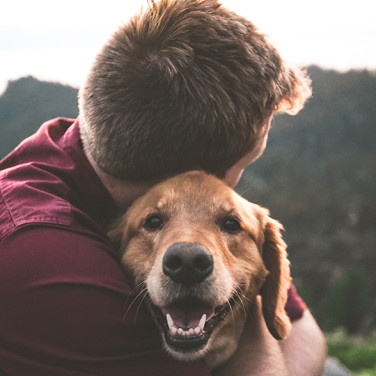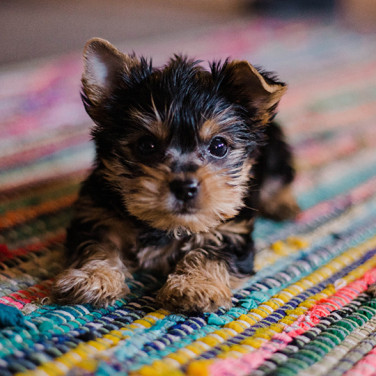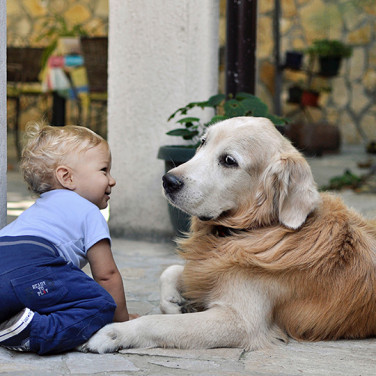ARTICLE
Puppy Socialization - How to and When to Start Training Your Puppy
페이지 정보
본문


As a dog owner, one of your main responsibilities is to make sure your puppy is well-trained and socialized. Socialization is the process of introducing your dog to different people, animals, and environments and teaching them how to behave in those different situations. Socialization training is crucial for your dog's development and overall well-being. In this article, we will discuss the importance of dog socialization training, the benefits it provides, the steps necessary to socialize your puppy, the challenges and risks involved, and tips for successful training.
When to socialize a puppy
Socialization training should start at a young age, around 3 months is ideal, but that may not always be the case. Early socialization is important because it helps the dog to develop positive behavior, confidence, and trust in you and its environment. The goal of socialization training is to ensure that a dog can handle different situations without becoming stressed, anxious, or aggressive. Similar to us, puppies experience a critical period of socializing that shapes their personality and how they will behave later as adults. If you acquired your dog later than 3-4 months of age, it is still never too late to introduce as much exposure to different circumstances so that they may develop positive behavior with other people, dogs, and places.
Why socializing is important
The benefits of socializing your dog are numerous. Firstly, socialization promotes positive behavior and helps build a healthier bond between you and your dog. A well-adjusted dog is less likely to become aggressive, nervous, or fearful in new situations. Secondly, socialization builds confidence in dogs. It teaches them how to interact with other animals and people without feeling intimidated or overwhelmed. Thirdly, socialization helps dogs to be less likely to display aggressive behavior towards other animals and people. Lastly, socializing training helps increase your dog's lifespan. Dogs that are well-socialized tend to live longer and have a better quality of life due to their positive acclimation to all types of sounds, sights, and smells.
This type of training also helps to increase your quality of life as several necessary routines will become more manageable with a well-socialized dog. A dog that has gone through proper socialization training plays a crucial role in how they behave in dire situations and prevent accidents. Socialization can help a dog behave more calmly and have less anxiety when it comes to introducing a child or during car rides.
How to socialize a puppy

-
Begin introducing as many new things, sounds, and smells
As soon as you bring your puppy home, you will want to begin introducing new sights, sounds, and smells but start small. Consider every new object, texture, and home experience as an opportunity to build a positive relationship between your puppy and the new strange world they were brought into. Think big and small when it comes to what to introduce next, such as a broom, plastic bag, and a pillow to different flooring like carpet, wood, tiles, etc. Below will be a list of ideas to help wrap your head around the types of things you can prepare to introduce to your puppy before bringing them home.
-
Make each interaction a positive experience
You want to ensure that each interaction is a positive one and is met with a lot of praise and an appropriate amount of treats. Your dog will naturally begin to associate the exposure to all the new stimuli as a fun and rewarding experience. This step is vital in order to condition as many new experiences in the critical period of your puppy’s personality-building stage of development. A tip to consider is breaking certain treats into small pieces and rewarding them accordingly if you plan to introduce many small things to your puppy in a course of a day.
-
Don’t overwhelm your puppy
Don't overwhelm your dog with too much at one time. Take it step by step and if your puppy ever shows fear or is suddenly anxious, it is best to back off from training and play with them instead. You do not want your puppy to ever begin to create a negative association at this stage of training or development. For instance, when introducing new people to your puppy, try to introduce a new person one at a time.
-
Time to take your puppy outside
Once you have introduced many experiences from small to big, smelly to loud, a child to an older family member, in the comfort of your home. It is time to introduce the many experiences your pet will inevitably run into every day on your walks. It is vital that at this point, all core vaccinations have already begun, and your vet signs off for your puppy to go outdoors. It is now time for your puppy to go out and confidently interact with all the new stimuli the outdoors has to offer. Introducing other animals to your dog in a gradual and controlled environment can begin at this step of socializing training. Take them to a friend's house for a doggy playdate, on a new route in the neighborhood, and in other familiar areas you can control what gets introduced to your puppy.
It will only be a matter of time before your puppy will begin to be comfortable in all types of situations with all the training in similar environments combined. This training may also be never-ending as you will always want to apply any new experience in the same manner. You will want to familiarize your dog with all kinds of things such as car rides, brushing their teeth, going to the groomers, etc. Taking the small steps to have them become comfortable with parts of each of these new experiences first can help to reduce poor behavior and reactions in the future.
Things you can consider exposing to your puppy to socialize them
-
People
You want to introduce all kinds of people to your puppy in a positive environment. This includes babies, children, teens, other adults, the elderly, big people, small people, a person with glasses, a person wearing a hat or hood, a person with a beard, canes, crutches, wheelchairs, and people in uniform.

-
Places
Places will take some time but introducing them at an early age will benefit both you and your dog’s quality of life. Places such as the yard, office space, coffee shop, airport, skate park, basketball court, tennis court, etc., supermarket, pet store, shopping centers, train station, loud places, places with crowds, main road, trail, other people’s homes.
-
Sounds
Your dog will come across many noises that you may not have thought to prepare for but introducing a wide variety can help to reduce a chance of a poor reaction to new noises. This can include vacuum cleaners, blow dryers, a variety of kitchen appliances, doorbells, traffic honks and beeping, kids laughing and screaming, a baby crying, wind, storm sounds, fireworks, lawnmowers, helicopters, motorcycles, glass sliding doors, bike bells, sirens, cheering, music, instruments, party.
-
Feelings
From climate to accessories, your dog will feel a lot of things and it would be beneficial if your dog is familiar with a wide range of feelings. Feelings like harnesses, different texture textiles, carpet, hardwood, tiles, linoleum, different fabrics, clippers, neck cones, toothbrush bristles, grass, gravel, sand, bathtub, car seats, brushes, fans, water(rain).
-
Animals
Other animals such as other dogs, big dogs, little dogs, shaggy dogs, bull breed dogs, cats, horses, chickens, birds, squirrels, rabbits, sheep, cows, and goats. Any other animals that your dog may come into contact with eventually.
-
Traveling
This can include anything from your car; tires, lights on the car, honking, windshield wipers, to any other modes of transport such as airplanes, trucks, motorcycles, trains, and bicycles. Also consider things such as bridges, escalators, elevators, etc.
-
Handling
Things to consider introducing to your puppy in this category include objects and situations you may need to do to save your puppy from certain situations. This includes your vet, grooming routines, patting, rubbing, hugging, invasive interactions, touching their ears, cleaning their eyes, being picked up, taking things from them, touching their food while eating, crates, neck cones, harnesses, etc.
-
Weather
Your pet will inevitably experience all kinds of weather; it is a good idea to introduce them as early as possible in a controlled environment. This means rain, snow, thunder, lightning, wind, fog, etc.
With these lists, the idea is to consider anything and everything when it comes to socializing your puppy to normal things they may run into on a regular basis. You do not want to do everything on these lists but picking and choosing a few from each list that is relevant to your lifestyle is a great place to start. It is vital you do not overwhelm your pet and instead offer them a healthy introduction to the strange new world they are entering under your care.
What are the challenges and risks of socializing a puppy
As expected, there will be some challenges and risks involved in socializing your dog. Fearful or aggressive dogs can be difficult to socialize and may sometimes require the help of a professional trainer. It is important to remain patient and back away if they show signs of fear of new stimuli. There are also health risks associated with socializing your dog, such as exposure to diseases or parasites. Ensure that you have given your puppy all their necessary vaccinations and preventives before continuing their training outdoors and with other animals. Over-socializing your dog can also be a risk as it may lead to separation anxiety or a lack of independence in their adulthood.
To ensure successful dog socialization training, it is important to be patient and consistent. Use positive reinforcement techniques such as treats and praise to encourage your dog's good behavior. Gradual introductions to new environments, people, and animals are also very important. Create a safe and controlled environment for your puppy to socialize in until you know your dog is ready for the next step.
Conclusion
Dog socialization training is a vital aspect of owning a dog. It is important for your dog's development, well-being, and overall happiness. Socializing your dog takes time, patience, and consistency, but it is well worth the effort. By following the steps outlined in this article, and being aware of the challenges and risks involved, you can successfully socialize your dog and enjoy a happy and healthy relationship with your furry friend.
Read more on the Buddydoc blog page!

Buddydoc provides a weekly updated blog to keep you informed on the latest and best ways to prepare and take care of your pet all year round. Check out more articles you may be interested in!













